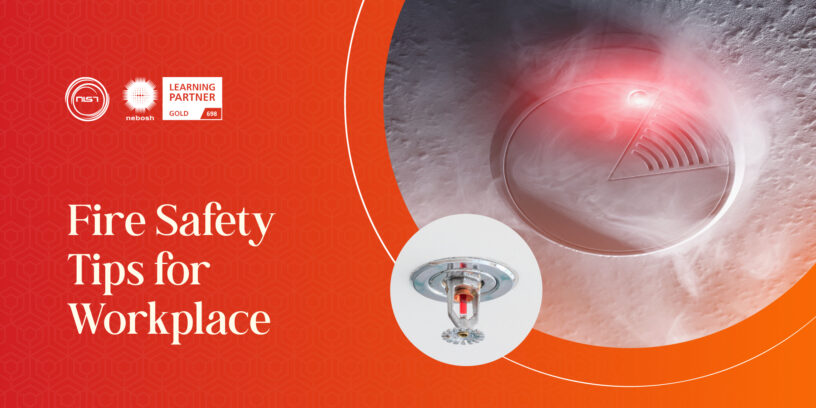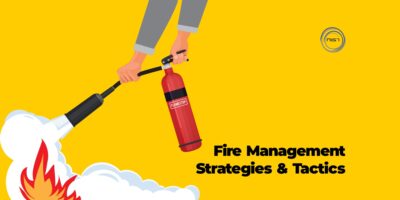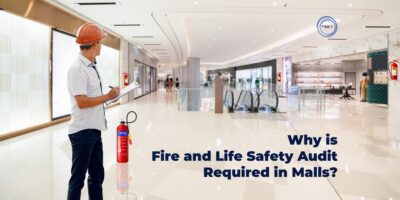Being prepared is essential when dealing with potential risks. Fire is one such risk that necessitates our utmost focus and preparedness. Fires pose a serious threat to life and property, especially in a business context since they are sometimes unexpected and spreads quickly. Every company needs to have extensive fire safety precautions given this risk.
This blog will bring you through seven essential fire safety guidelines, each one intended to improve workplace safety and get you and your team ready if there’s a potential fire incident. By being aware of and using these suggestions, you may create a safe working environment, avert possible fire risks, and make sure you are prepared to act quickly in case of fire.
1. Evacuation Strategy
Make sure everyone understands where the nearest exit is from their workspace and if everyone knows where the fire extinguishers and first aid kits are located. If not, this is a good place to start.
Additionally, it’s crucial to establish an evacuation plan in case of a fire so that you can leave swiftly and safely without stressing over what to do next. Everyone benefits from having an evacuation plan since it keeps them all composed throughout this tense scenario and keeps their minds from thinking about what to do next or how far away from danger they are at any particular time.
2. Safety Drills
Any workplace safety strategy must include fire drills. They give workers the chance to practice responding to emergencies in a secure setting. If a true emergency arises, they can ensure that their response is quick and efficient.
We advise doing fire drills at least twice a year, while more often is preferable if practical. It’s crucial to practice the exercise itself as well as going through what each employee should do in the event of an emergency. This can be achieved by sending managers or supervisors to ask individuals what they would do in that scenario while they are walking about during the drill.
3. Smoke Alarm & Sprinkler Installation
Installation of a functional sprinkler system and smoke alarm is the best approach to safeguard your building and its inhabitants. Every building must have functioning smoke alarms and sprinkler systems, but you must also regularly test them to make sure they function properly. It’s time to test your smoke alarms if you haven’t recently.
Pushing the button on the side of the smoke alarm should be done once a month to test it. Additionally, make sure your wiring and installation are free of any flaws that can lead to complications in the future.
4. Fire extinguishers
Examine the fire extinguishers’ gauges. Make sure the extinguishers are readily available and well charged. Additionally, test them and instruct staff on how to utilize them appropriately. Find a skilled instructor to teach your staff how to utilize them properly if they require extra training or information.
5. Equipment maintenance
All of the building’s equipment needs to be regularly inspected to make sure it is operating properly. Any electrical devices that might overheat and catch fire fall under this category. It is crucial to regularly inspect them and make sure they are functioning properly because these flames have the potential to significantly harm or even completely destroy your property.
6. Electrical hazards
It’s critical to recognize any electrical hazards. If you find any problems, get in touch with a qualified Electrician right once. Fires in the workplace are frequently caused by electrical equipment that isn’t working properly. Electrical risks can be harmful to both clients and staff.
In order to prevent anything from catching fire in the event of a short circuit or other issue with the wire itself, make sure the area around the wiring is kept free of clutter and other items.
7. Safe storage
The best place to keep hazardous waste is in a metal container. This is due to the fact that metal containers are non-conductive, meaning they won’t ignite if they come into contact with combustible substances.
Another crucial step is to regularly empty your metal container. There’s a potential that someone could get ill or possibly die from exposure to the materials if you keep hazardous materials in an unattended area for an extended period of time.
In conclusion, maintaining workplace fire safety is a shared responsibility that necessitates awareness, readiness, and quick response. Building a culture of safety where everyone is aware of how to put out a fire and react if one does break out is more important than simply knowing where the fire extinguisher is.
At NIST Global, we offer customized bespoke training:
- Fire safety
- Fire watcher
- Fire Fighting
- Mock Drill
We also offer Fire & Life Safety Audit that enables safety measures required to protect life & property at workplace.
For further details, kindly call our Fire safety experts @ +91 8754465588 / info@nistglobal.com.














Leave a Reply